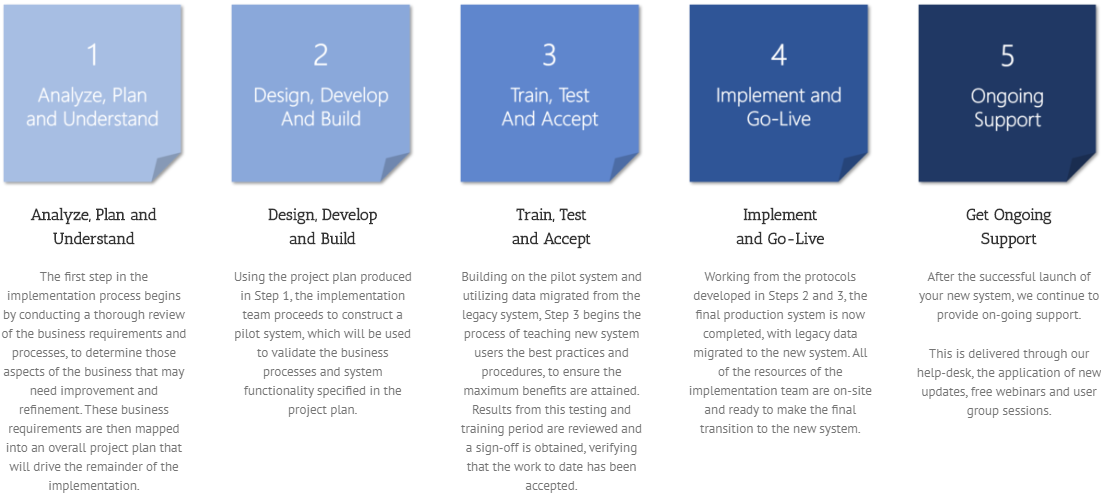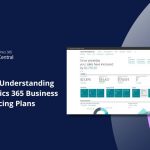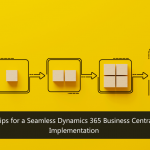
Since Microsoft renamed Dynamics NAV to Dynamics 365 Business Central (BC), it has continued to help businesses all over the world streamline processes. Unfortunately, people have not implemented Dynamics 365 BC yet, and they are missing out on connecting their financials, sales, purchase, inventory, projects, service, and operations.
If you plan on implementing Dynamics 365 Business Central, we are going to share with you a comprehensive guide on Dynamics 365 BC cost and licensing, implementation, and customization. This guide is going to help you to get the most out of Microsoft Dynamics 365 Business Central.


Dynamics 365 Business Central Pricing and Licensing
Costing a comprehensive software solution is a great part of implementation, but it has its issues. If you create a budget with prices that do not take into account other potential outlays that come up during the rolling out of the solution, you will be in shock with the rise in costs that come about. There are lots of hidden costs with software ownership. Knowing these costs helps paint a better picture. If not, the lack of factoring additional expenses can significantly hurt your ROI. In addition to ROI, study has shown that Dynamics 365 generates an average of $16.97 for every dollar spent on it.
Dynamics 365 BC has a few licensing options that depend on your needs and the apps you want to use. You have the option to choose from Essentials or Premium based on your needs, then you can add Team Members for your read-only users that are needed. These are the three plan options, but technically two:
1. Dynamics 365 BC: Essentials user
The Dynamics 365 Business Central Essentials version offers business functionality across financials, sales, service, and operations. This version can be modified to fit your needs by adding different applications.
This cost $70 per user/ month
It includes:
- Invoice
- Purchasing
- Opportunity Management
- Budget
- Finance
- Fixed Assets
- Purchasing Order Management
- Resource Management
- Workflow
- Contact Management
- Simple Inventory
- Advanced Sales (SO)
- Advanced Inventory (Stock)
- Distribution
2. Dynamics 365 BC: Premium user
The Dynamics 365 Business Central Premium version offers all of the Team Member and Essential version’s functionality. Although it has robust functionalities such as Service Management, Manufacturing, and Supply planning.
This cost $100 per user/ month
It includes:
-
Service Management
Enhance your customer’s satisfaction and loyalty with this function. You are able to:
-
- Schedule service calls and setup service orders.
- Track repair parts and supplies.
- Assign service personnel based on skill and availability.
- Provide service estimates and service invoices.
- Standardize coding.
- Set up contracts
- Implement a discounting policy.
- Create route maps for service employees.
-
Manufacturing
Some tasks that the Manufacturing function include are:
-
- Understand how production orders work.
- Create production orders manually.
-
- Outsource all or selected operations in a production order to a subcontractor.
- Record and post-production output along with material and time consumption for a single released production order line.
- Batch post the quantity of components used per operation in a journal that can processes multiple planned production orders.
- Post the quantity of finished items and the time spent per operation in a journal that can processes multiple released production orders.
- Post the number of items produced in each finished operation which do not qualify as finished output, but as scrapped material.
- View the shop floor load as a result of planned and released production orders.
- Use the Capacity Journal window to post-consumed capacities that are not assigned to a production order, such as maintenance work.
- Calculate and adjust the cost of finished production items and consumed components for financial reconciliation.
-
Supply Planning
Before you can plan and execute production orders, you must configure production capacities, such as creating shop calendars, routings, production BOMs, and machine centers. Planning can be seen as the preparation required supply orders in the assembly or manufacturing departments to fulfill demand.
-
- Get a brief introduction to how the planning system can be used to detect and prioritize demand and suggest a balanced supply plan.
- Understand how all aspects of the planning system works and how to adjust the algorithms to meet planning requirements in different environments.
- Learn how the planning logic differentiates between demand at locations according to the SKU setup and demand without location codes.
- Forecast production demand presented by expected sales and production orders.
- Create one-to-one production orders automatically from a sales order to cover the exact demand of that sales order line.
- Create a project production order directly from a multi line sales order representing a production project.
- Use the Order Planning window to manually plan for sales or production demand one production BOM level at a time.
- Use the Planning Worksheet window to run both the MPS and MRP options to automatically create either a high-level or detailed supply plan at all item levels.
- Run the requisition worksheet to automatically create a detailed supply plan to cover demand for items that are replenished by purchase or transfer only.
- Initiate or update a production order as rough-scheduled operations in the master production schedule.
- Recalculate work or machine center calendars due to planning changes.
- Track the order demand (tracked quantity), forecast, blanket sales order, or planning parameter (un-tracked quantity) that has given rise to the planning line in question.
- View an item’s projected available inventory by different views and see which gross requirements, planned order receipts, and other events influence it over time.
- Perform selected planning activities, such as changing or adding planning worksheet lines, in a graphical view of the supply plan.
3. Dynamics 365 BC: Team Members user
The Dynamics 365 Business Central Team Members subscription is a named user subscription designed for users who are not tied to a particular function, but who require basic Dynamics 365 Business Central functionality. This license includes read access as well as some write access for select light tasks across Dynamics 365 Business Central functionality for a given tenant. Dynamics 365 Business Central Team Members requires that at least one other user be licensed with Dynamics 365 Business Central Essentials or Dynamics 365 Business Central Premium.
This cost from $8 per user/ month.
It includes:
- Read and Approve
- Run all reports
- Employee Self Serve
NOTE: You have to choose either Essential or Premium version, then you can add Team Member users to either of the two subscriptions; you cannot mix and match essentials and premium.
Dynamics 365 Business Central Implementation
At TMC, we have over 30 years of implementing ERP solutions for companies, so we refined the implementing experience into a simple approach that produces the highest quality and lowest risk of your new ERP system.



In terms of specifically implementing Dynamics 365 Business Central, we offer 3 tiers and on-going support. We have perfected 3 streamlined fully-remote implementation packages for our customers, so no matter your size or location, we have the right implementation package for you. As always, if you need more than what is listed in the implementation packages below, we can come on-site for traditional training and offer customized services. We are excited to get started on your Dynamics 365 Business Central implementation.
Customization
You can customize your Dynamics 365 solution to meet your needs. You can modify apps to look the way you want by changing the interface, creating custom workflows and reports, or set up new dashboards. These types of customization come at a cost. The more customization your company needs before launching, the expensive the implementation will be.
Visit our website’s resources to learn more about our solutions in order to further your understanding of financial and business management systems. Team up with a certified Microsoft Gold Partner to make your migration to the cloud seamless. If you have any questions regarding Dynamics 365 or other ERP/CRM systems, you can contact us here.
Don’t forget to follow us on Facebook, LinkedIn, and Twitter. Subscribe to our YouTube channel for insightful tutorials and demos.






